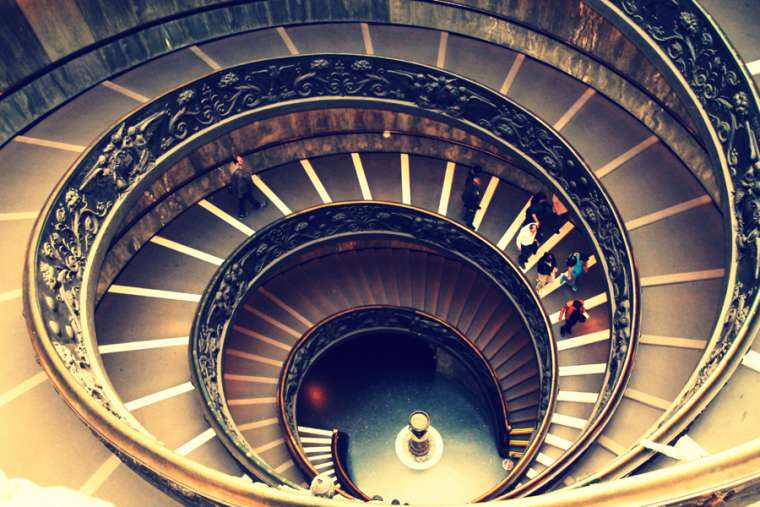The spiral staircase at the Vatican Museums on Nov. 12, 2015. Credit: Gianluca Gangemi/CNA.
The Vatican announced Wednesday that the Vatican Museums will close until 3 December as Italy implements further coronavirus restrictions.
Italian Prime Minister Giuseppe Conte signed a decree to close all museums in Italy from 5 November until 3 December in response to the growing number of coronavirus cases in Italy. Throughout the coronavirus pandemic, the Vatican Museums have followed the Italian government’s measures.
Along with the Vatican Museums, the Scavi Tour of St. Peter’s tomb, as well as the Pontifical Villas, will close to visitors starting 5 November, according to the Holy See press office.
Europe is currently experiencing a second wave of coronavirus cases. Italy’s health ministry reported 28,244 new COVID-19 cases and 353 deaths in 24 hours Nov. 3, with 2,225 coronavirus patients currently being treated in intensive care units, including Cardinal Gualtiero Bassetti, president of the Italian bishops’ conference.
In addition to the closure of museums, Italy has also introduced further restrictions, including a national curfew from 10 p.m. to 5 a.m., the closure of all shopping centres at weekends, and reduced capacity for public transportation.
While other European countries, including France and England, have entered into national lockdowns, Italy so far has varied coronavirus restrictions by region and infection rates.
“Red zones” with high infection rates — currently only the Italian regions of Lombardy, Calabria, and Piedmont — will face lockdown measures with restrictions on movement, the closure of nearly all retail shopping and restaurants, and the suspension of universities.
In “orange zones,” all bars and restaurants will close, except for takeout, for a month and interregional travel will be restricted.
Italy was one of the first countries to implement a lockdown in March in response to the coronavirus outbreak. At that time, the Vatican Museums closed for a total of 12 weeks.
At its reopening on 1 June, the Vatican Museums required online reservations to limit visitors and stagger entrance times, as well as mandatory temperature checks at the entrance.
The Vatican Museums typically receive millions of visitors each year, and generated around $87 million annually as of 2015, half of which was surplus revenue for Vatican City, according to the Economist. In the months that the museums were closed due to the pandemic, Vatican City likely lost millions of dollars in revenue.
In light of the pandemic, the Patrons of the Arts in the Vatican Museums have begun offering online art history courses, with webinar lectures and conversations with art curators and restorers about the Raphael Rooms, the Sistine Chapel, and the history of the Vatican Museums collections.
As of Nov. 3, a total of 759,829 people in Italy have tested positive for COVID-19, of which 418,142 people are currently positive for the coronavirus and more than 20,000 people are currently hospitalised.
Source: CNA

